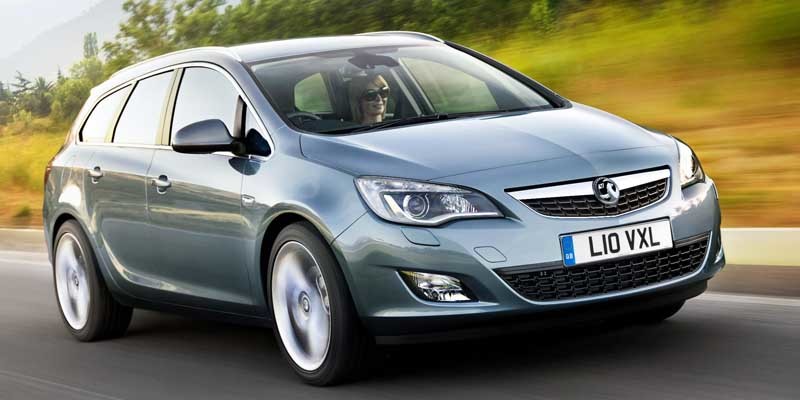This is the new Vauxhall Astra estate and it’s much, much better than the car it replaced late last year but then so is virtually all of the opposition, so how does it stack up next to the best of its rivals?
The Astra Sports Tourer (as Vauxhall prefers to call it) was launched at the tail end of last year, almost a full 12 months after the hatchback model.
The range starts at £17,270 and stretches to £25,165, and buyers can choose from 1.4 and 1.6 litre petrols, a turbocharged 1.4 petrol, two 1.7 litre diesels (108 or 123bhp) and a 158bhp 2.0 litre diesel.
I drove the 1.7 CDTi ecoFLEX in SRi trim, which retails at £22,785. It has the more powerful of the 1.7 litre diesels and returns a healthy 62.8mpg. With emissions of 119g/km it’ll cost £30 a year to road tax.
The engine’s capable enough, with 0-62mph being knocked off in 11 seconds, but it has a very heavy feel and is noisier than other diesels in its class, so I’d recommend going for one of the petrol units.
It’s a blandly handsome car decent looking, but in a fairly unremarkable way and more importantly one of the most practical in its class.
The boot will take 500 litres, expanding to 1550 with the rear seats folded. Those figures equal its biggest rivals, the Focus and Golf estates.
Importantly, the Astra estate has a low load sill and a wide tailgate opening, making it a cinch to load even heavy items.
There’s plenty of room up front and, although the back seats are a little more tight there’s still enough space for a couple of adults.
Vauxhall’s designers have done a very good job of overhauling the old Astra’s cabin, with slick, modern, easy to use switchgear.
There’s a lot of buttons though, some of them quite small, so it takes a while to familiarise yourself with the controls.
When it comes to equipment, all the basics are there, but although entry-level ES models have air-conditioning, you have to upgrade to Exclusiv trim to add cruise control and stereo controls on the steering wheel, and to SE or SRi for standard alloy wheels.
Safety wise, all models come with stability control and front, side and curtain airbags.
Once up to speed, the noise from the diesel engine fades to acceptable levels and the Astra’s smooth ride comes into its own. Coupled with the diesel’s strong fuel economy, the estate’s a surprisingly capable cruiser.
Its handling isn’t as good as the best in its class step forward the Ford Focus but most estate drivers won’t care too much about that.
Overall, the Astra Sports Tourer is a strong contender but it’s not the best in its class. The Ford Focus and Volkswagen Golf both pip it for refinement, quality and driving dynamics.
It’s also quite expensive for the price of my test car, I could have had a decently equipped diesel Skoda Superb, which is one of the best estate cars out there.
But if you like your estates a bit more compact, the Astra is certainly worth a look.
Price: £22,7850-62mph: 11secTop speed: 120mph Economy: 62.8mpg CO2 emissions: 119g/km
